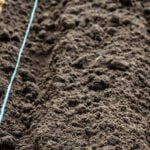Are you wondering how often to water vegetable gardens in heat? Proper watering is crucial for maintaining a healthy vegetable garden, especially during periods of high temperatures. Understanding the impact of heat on water needs, signs of dehydration in plants, best practices for watering in hot weather, and choosing the right irrigation system are all essential factors in ensuring your vegetable garden thrives.
High temperatures can significantly affect the water requirements of vegetable plants, making it important to adjust your watering routine accordingly. Signs of dehydration in plants, such as wilting or yellowing leaves, can indicate that your vegetable garden is in need of water. In this article, we will explore the best practices for watering your vegetable garden during periods of heat and provide tips on selecting the most suitable irrigation system to ensure your plants receive adequate moisture.
Additionally, understanding the specific water needs of different types of vegetables during hot weather and utilizing techniques such as mulching for moisture retention are also crucial aspects of maintaining a thriving vegetable garden. Regularly monitoring soil moisture levels is equally important in preventing dehydration and stress in your vegetable plants. All these elements play a vital role in ensuring that your vegetable garden remains healthy and productive even when faced with extreme heat conditions.
Understanding the Impact of Heat on Water Needs
When it comes to maintaining a healthy vegetable garden, understanding the impact of heat on water needs is crucial. High temperatures can significantly affect the water requirements of vegetable plants, making it essential for gardeners to adjust their watering routine to ensure the health and productivity of their crops.
Increased Evaporation
One of the primary ways that heat affects water needs is through increased evaporation. During periods of high temperatures, water evaporates from the soil at a much faster rate, leading to quicker drying out of the ground and an increased need for watering. This means that vegetable plants are more likely to become dehydrated in hot weather, requiring more frequent irrigation to compensate for the rapid moisture loss.
Stress on Plants
High heat can also lead to added stress on vegetable plants, further increasing their need for water. When subjected to high temperatures, plants experience greater transpiration rates – the process by which water is drawn up from the roots and evaporated through the leaves. As a result, plants can quickly become dehydrated and stressed, impacting their growth and overall health.
Soil Quality and Composition
Additionally, heat can affect soil quality and composition, influencing how well it retains moisture. In hot weather, soil may become compacted or dry out more quickly, impacting its ability to hold onto water. This necessitates more frequent watering in order to ensure that vegetable plants have access to sufficient moisture for optimal growth.
Understanding these impacts of heat on water needs is essential for determining how often to water your vegetable garden during periods of high temperatures. By recognizing these factors and adjusting your watering routine accordingly, you can help maintain a healthy and thriving garden even in the hottest weather.
Signs of Dehydration in Plants
During periods of heat, it is crucial to pay close attention to your vegetable garden’s water needs. The impact of high temperatures can significantly increase the water requirements of vegetable plants, making it essential to understand the signs of dehydration in plants. By being able to identify visual cues that indicate your vegetable garden is in need of water, you can ensure that your plants remain healthy and productive.
Some common signs of dehydration in vegetable plants include wilting leaves, drooping stems, and yellowing or browning of the foliage. Additionally, if you notice that the soil around your plants is dry and cracked, this is another indication that they are not receiving enough water. It is important to regularly inspect your vegetable garden for these visual cues, especially during hot weather, to prevent damage and stress on the plants.
To ensure that your vegetable garden receives the appropriate amount of water during periods of heat, here are some helpful practices for identifying signs of dehydration in plants:
- Regularly inspect the soil moisture by checking a few inches below the surface
- Look for visual cues such as wilting leaves and drooping stems
- Keep an eye out for yellowing or browning foliage as an indication of dehydration
By understanding these visual cues and promptly addressing any signs of dehydration, you can effectively manage how often to water your vegetable gardens in heat and maintain healthy plant growth.
Best Practices for Watering in Hot Weather
During periods of heat, it is crucial to adjust your watering routine to meet the increased water needs of vegetable plants. Proper watering is essential for maintaining a healthy vegetable garden, especially in hot weather. Failing to provide adequate water can result in stunted growth, reduced yields, and even plant death. In this section, we will explore the best practices for watering your vegetable garden during hot weather, including the best times and methods for effective watering.
Here Are Some Tips for Effectively Watering Your Vegetable Garden in Hot Weather
- Water in the early morning or late evening to minimize water loss due to evaporation.
- Use a soaker hose or drip irrigation system to deliver water directly to the base of plants, minimizing waste and promoting deep root growth.
- Avoid overhead sprinklers, which can lead to water loss through evaporation and increase the risk of disease by wetting plant foliage.
In hot weather, it is important to pay attention to the specific water needs of different types of vegetables. Some plants may require more frequent watering than others, especially those with shallow roots or high moisture requirements. To avoid overwatering or underwatering, it is essential to monitor soil moisture regularly and adjust your watering schedule accordingly.
Here’s How You Can Adjust Your Watering Frequency for Different Vegetables
- Leafy greens such as lettuce and spinach may require more frequent watering due to their shallow root systems.
- Root crops like carrots and radishes need consistent moisture but can be prone to rot if overwatered.
- Fruit-bearing plants like tomatoes and peppers may need regular deep watering to support fruit development.
By following these best practices for watering in hot weather and adjusting your watering schedule based on the specific needs of different vegetables, you can help ensure that your vegetable garden thrives despite the challenges of high temperatures.
Choosing the Right Irrigation System
When it comes to effectively and efficiently watering your vegetable garden in hot weather, choosing the right irrigation system is crucial. Different options exist, each with their own benefits and considerations. By exploring these options, you can find the best fit for your garden’s specific needs.
Drip Irrigation
One popular option for vegetable gardens is drip irrigation. This method involves delivering water directly to the base of the plants through a system of tubing and emitters. Drip irrigation provides consistent and controlled moisture to the roots, minimizing water waste through evaporation or runoff. It is also an efficient way to deliver water to the plants without wetting the foliage, reducing the risk of disease during hot and humid conditions.
Sprinkler Systems
Sprinkler systems are another common choice for watering vegetable gardens. These systems use overhead sprayers to distribute water across the garden area. While convenient and effective for large areas, it’s important to consider water evaporation in hot weather as well as potential damage to certain vegetables from direct exposure to water on their leaves.
Soaker Hoses
Soaker hoses are a simple and cost-effective option for irrigating vegetable gardens. These hoses have small pores that allow water to seep out slowly along their length, providing deep root watering while minimizing surface runoff. Soaker hoses are especially useful for areas with dense plantings or irregular layouts.
Ultimately, choosing the right irrigation system depends on various factors such as your garden layout, type of vegetables grown, and overall climate conditions. By considering these factors and selecting an appropriate irrigation system, you can ensure that your vegetable garden receives the proper amount of water during periods of heat without unnecessary waste or risk of plant stress. Remember always to adjust your system based on how often needs are too maintained depending on temperature changes within your region.
Adjusting Watering Frequency for Different Vegetables
Different vegetables have different water requirements, and these needs become even more crucial during periods of heat. Understanding the specific water needs of different types of vegetables is essential for maintaining a healthy and thriving garden. In hot weather, it’s important to adjust the watering frequency based on the specific needs of each vegetable to ensure optimal growth and productivity.
Tomatoes, for example, are known to have deep roots and require consistent moisture to prevent issues such as blossom end rot. During periods of heat, tomato plants may need to be watered deeply every 3-4 days, depending on the soil conditions and weather. On the other hand, leafy greens like lettuce and spinach have shallow root systems and may require more frequent watering, up to once or twice a day in extreme heat.
Root vegetables such as carrots and radishes also have distinct water needs. These crops benefit from consistent moisture but can suffer if the soil becomes waterlogged. In hot weather, it’s important to strike a balance by watering deeply but less frequently, allowing the soil to dry out slightly between watering sessions.
Understanding the specific water needs of different vegetables during periods of heat is crucial for maintaining a healthy garden. By adjusting the watering frequency based on the individual requirements of each crop, you can ensure that your vegetable garden stays healthy and productive even in the hottest summer months.
Regularly monitoring soil moisture levels and observing how your plants respond to different watering schedules will help you determine the best approach for meeting their specific water needs during times of heat.
Mulching for Moisture Retention
When it comes to maintaining a healthy vegetable garden in hot weather, mulching can be a game changer. Mulch acts as a protective barrier for the soil, helping to retain moisture and reduce evaporation, which is especially important during periods of heat. By using mulch in your vegetable garden, you can reduce the frequency of watering while still ensuring that your plants receive the moisture they need to thrive.
In addition to retaining soil moisture, mulch also helps to regulate soil temperature, keeping it cooler during hot weather. This is beneficial for the roots of your vegetable plants, as excessively high temperatures can stress and damage them. By maintaining a more stable and moderate temperature, mulch can contribute to healthier and more resilient plants in your garden.
It’s important to choose the right type of mulch for your vegetable garden. Organic materials such as straw, wood chips, or shredded leaves are excellent options for retaining moisture and improving soil structure. Additionally, these organic mulches break down over time, adding valuable nutrients to the soil. In contrast, synthetic mulches like plastic sheeting may not provide the same benefits and could potentially lead to excess heat buildup in the soil.
| Benefits of Mulching | Types of Organic Mulch |
|---|---|
| Retains soil moisture | Straw |
| Regulates soil temperature | Wood chips |
| Adds nutrients to the soil | Shredded leaves |
Overall,Mulching is an effective method for helping vegetable gardens withstand periods of heat without succumbing to dehydration. By reducing evaporation from the soil and regulating temperatures, it allows you to conserve water while providing optimal growing conditions for your vegetables.
Monitoring Soil Moisture
One of the most crucial aspects of maintaining a healthy vegetable garden, especially during periods of heat, is ensuring that the soil has adequate moisture. With high temperatures, the water in the soil evaporates more quickly, making it essential to monitor and maintain proper moisture levels for your vegetables.
But how often should you water your vegetable garden in hot weather? The frequency will depend on various factors such as the type of soil, the specific vegetables you are growing, and the prevailing weather conditions.
To effectively monitor soil moisture, it is important to understand how different types of soil retain water. Sandy soil tends to drain quickly and may require more frequent watering, while clay soil retains water for longer periods. Regularly checking for moisture involves simply sticking your finger into the soil – if it feels dry up to your first knuckle, it’s time to water. Alternatively, using a soil moisture meter can provide a precise measurement of moisture levels.
In addition to checking soil moisture by feel or using a moisture meter, another effective method is observing plant behavior. If you notice wilting leaves or drooping stems, this could be an indication that your vegetable plants are not getting enough water.
It’s important to act promptly when these signs are evident in order to prevent damage and promote healthy growth. By regularly monitoring and adjusting your watering schedule based on these observations, you can ensure that your vegetable garden thrives despite the challenges posed by hot weather.
| Soil Type | Watering Frequency |
|---|---|
| Sandy | More frequent – possibly every 2-3 days |
| Clay | Less frequent – possibly every 4-7 days |
Conclusion
In conclusion, maintaining a thriving vegetable garden in periods of heat requires diligent and attentive watering practices. Understanding the impact of high temperatures on water needs is crucial in ensuring that your plants receive the proper hydration they need to flourish. By paying attention to signs of dehydration and adjusting watering frequency for different types of vegetables, gardeners can help their plants thrive despite the challenges posed by heat.
Choosing the right irrigation system and utilizing mulching for moisture retention are also important factors in effectively and efficiently watering a vegetable garden during hot weather. By implementing best practices for watering in hot weather and regularly monitoring soil moisture levels, gardeners can ensure that their plants have the optimal growing conditions.
Frequently Asked Questions
Should I Water My Vegetable Garden Every Day When It’s Hot?
Watering your vegetable garden every day when it’s hot may not be necessary and could even be counterproductive. Over-watering can lead to root rot and other problems. It’s better to water deeply but less frequently, allowing the soil to dry out between watering.
How Often Do You Water Tomatoes in 100 Degree Weather?
In 100-degree weather, tomatoes should ideally be watered deeply at least every 2-3 days. The goal is to keep the soil consistently moist but not soggy. Mulching the soil around the plants can also help retain moisture.
How Often Do You Water Flowers in 100 Degree Weather?
When it comes to flowers in 100-degree weather, the watering frequency will depend on the specific type of flower and its individual needs. Generally, deep watering every 2-3 days should be sufficient, keeping in mind that different flowers have different tolerance levels for heat and drought.
It’s important to monitor the soil moisture and adjust watering as needed to prevent wilting or dehydration.

If you’re looking to get into vegetable gardening, or are just looking for some tips on how to make your current garden better, then you’ve come to the right place! My name is Ethel and I have been gardening for years. In this blog, I’m going to share with you some of my best tips on how to create a successful vegetable garden.





